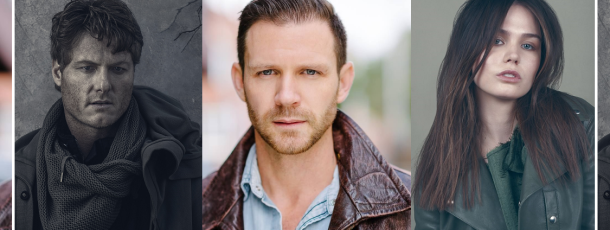The Importance of Headshots By Phil Breman
Don’t Let a Bad Headshot Ruin Your Audition!
If you’ve been an actor in New York or Hollywood for more than a few days, more than likely you’re all too familiar with the need for a good headshot. A headshot is just what it says. A close up shot of your face. Casting directors, producers, writers and directors use your headshot to get a quick look at you to see if you have the right physical attributes for a given role.
Your headshot will usually have two components.
An 8×10 close up picture of your face and a copy of your resume (sometimes also referred to as your list of credits). Your picture can either be color or black and white, but considering how cheap color photos are to reproduce nowadays, consider going this route.
The Headshot
Your headshot should be taken by a professional photographer. Keep in mind, that you want it to put you in the best light possible – literally. Lighting is key to having a good headshot and amateur headshots are pretty obvious. Now, that doesn’t mean you have to blow $500-$1000 on the most amazing photographer you can find. There are plenty of well qualified headshot photographers out there who will give you a quality headshot at an affordable price.
It’s important to try to find a photographer who specializes in headshots. Try going through referrals (from friends, other actors, casting directors, etc.) rather than just finding someone randomly on or offline.
There are a lot of unscrupulous people out there just looking to take advantage to ignorant young actors. So find someone who has a good reputation and lots of samples to show you.
The pose in your headshot is important as well. The trick to a great headshot is one that exudes your personality. You want the people looking at it to be able to discern the kind of actor/person you are simply by taking a glance at the photo.
If you’re a comic actor, make sure that your pose isn’t dour, sad or angry (unless that’s HOW you’re funny). On the other side of that point, be sure you DON’T do some sort of zany pose that makes you look silly. The point is to make sure the photo shows who you are in “real life.”
Have a couple different options of your headshot at the ready. Maybe one where you’re smiling, one where you look serious, etc. This way, you can send different versions of your headshot depending on the type of project. That said, don’t set yourself up with a dozen different poses — this will more often than not, hurt you more than help you.
Wear a solid color in your headshot and be sure the background (if you can see any at all) is simple and not too distracting. Remember, you want people to focus on your face and what you look like rather than on what you’re wearing or what might be going on behind you. This is why photographers usually choose to shoot headshots up against a wall, or some other solid background.
It helps to have your name somewhere on the photo, usually printed on the bottom with your agency info. This isn’t a mandatory, but it often helps if your resume/list of credits gets lost, people will still have a way to contact you.
Should you choose headshots that are glossy, matte, carbon copy– doesn’t really matter. The important thing is that you LOOK LIKE THE PERSON IN THE PICTURE. You wouldn’t believe the number of actors/actresses who come in with headshots that are 20+ years old trying to pull off that they still look like the person in the photo. Remember, the golden rule, the casting director is going to find out what you look like when they meet you, so don’t disappoint them by providing them with something that sets up improper expectations. Gained 20-30 pounds since your last headshot? Re-do it and adjust the projects you go after as needed.
List of Credits/Resume
A lot of actors think it’s important to load up their list of credits with a lot of acting experience that is either completely or partially falsified. But remember, only genuine (real TV, stage or film credits) credits mean anything. Just because you were the lead in your school play doesn’t mean it belongs on your professional acting resume (unless of course, you’re still of high school age, and then it couldn’t hurt especially if you don’t have anything else to put on there.)
Your list of special skills needs to be accurate as well. If you say you can swim and you’re hired because they think you’d be great as a lifeguard, then you better be able to swim. The point here is be careful where and how you exaggerate and avoid it if possible.
The Format
Your credits will either be printed on the back of your photo, or stapled to it with the credits facing out so all someone has to do is flip over your picture to see your credits. Considering casting directors look at THOUSANDS of these every week, make sure you follow the format so that yours has a chance to be part of the mix.
A Final Thought
Getting an acting gig starts by getting in the door of a casting directors office. Regardless of how great your acting skills are, if you don’t have a headshot to use as your calling card, no one might ever know you exist. So, beg or borrow the money to get your headshots made by a PROFESSIONAL and let the world know you’re ready for your close up.
